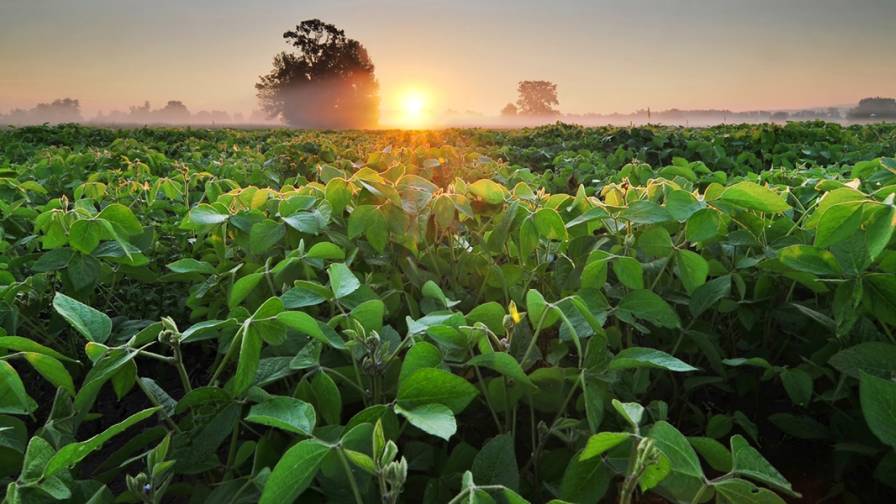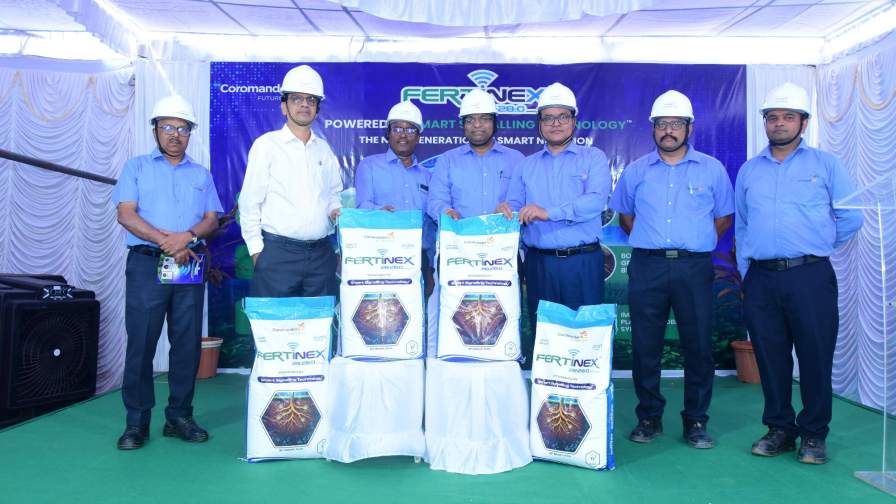Preparado para o crescimento: o mercado de fertilizantes iniciais ultrapassará US$ 14,2 bilhões até 2034
Em uma era em que práticas agrícolas sustentáveis e segurança alimentar são prioridades globais, o mercado de fertilizantes iniciais está emergindo como um componente vital na agricultura moderna. De acordo com projeções recentes, o mercado global de fertilizantes iniciais deverá ultrapassar US$ 14,2 bilhões até 2034, impulsionado por uma confluência de fatores como o aumento da demanda global por alimentos, a redução de terras aráveis, o foco crescente no rendimento das colheitas e os avanços tecnológicos na formulação de fertilizantes.
Este artigo explora o crescimento dinâmico do mercado de fertilizantes iniciais, destacando as principais tendências, impulsionadores e insights regionais que ressaltam seu significativo potencial futuro.
Compreendendo os fertilizantes iniciais
Fertilizantes iniciais são formulações ricas em nutrientes aplicadas no momento do plantio, geralmente próximas à semente. Sua finalidade é fornecer nutrientes essenciais — principalmente nitrogênio (N), fósforo (P) e potássio (K) — em pequenas doses concentradas que ajudam as plantas jovens a estabelecer raízes fortes e a crescer precocemente. Esses fertilizantes desempenham um papel fundamental para garantir um início vigoroso para as culturas, especialmente em solos com deficiência de nutrientes ou em condições de plantio frias.
Motoristas de mercado que impulsionam o crescimento
1. Aumento da demanda global por alimentos
Com a previsão de que a população mundial ultrapasse 9 bilhões até 2050, a pressão sobre os sistemas agrícolas para produzir mais alimentos com terras e recursos limitados está se intensificando. Os fertilizantes iniciais oferecem uma solução, aumentando o vigor das mudas e acelerando o estabelecimento das culturas, o que leva a maiores produtividades.
2. Diminuição da Terra Arável
A urbanização, a industrialização e as mudanças climáticas contribuíram para o rápido declínio das terras cultiváveis. Nesse contexto, maximizar a produtividade por hectare torna-se crucial. Os fertilizantes iniciais permitem que os agricultores aproveitem ao máximo as terras agrícolas limitadas, garantindo que as lavouras tenham um início de crescimento vigoroso.
3. Foco na Agricultura de Precisão
Agricultores modernos estão cada vez mais adotando técnicas de agricultura de precisão para otimizar o uso de recursos e reduzir o desperdício. Os fertilizantes iniciais se encaixam perfeitamente nesse modelo, pois são normalmente aplicados de forma direcionada, garantindo que os nutrientes sejam entregues exatamente onde são necessários durante o desenvolvimento inicial da planta.
4. Conscientização crescente sobre práticas sustentáveis
As regulamentações ambientais e a maior conscientização sobre o impacto ecológico da agricultura levaram à preferência por fertilizantes que minimizam o escoamento superficial e a lixiviação de nutrientes. Os fertilizantes iniciais, com sua aplicação localizada e volumes totais menores, são uma alternativa mais sustentável em comparação à fertilização a lanço tradicional.
Segmentação de Mercado
Por tipo de cultura
- Cereais e grãos: Trigo, milho e arroz dominam o uso de fertilizantes iniciais, pois essas culturas se beneficiam significativamente do acesso precoce aos nutrientes.
- Frutas e vegetais: Culturas de alto valor, como tomates, alface e frutas vermelhas, também se beneficiam de fertilizantes iniciais, garantindo melhor estabelecimento das plantas e maior valor de mercado.
- Oleaginosas e leguminosas: O aumento da produção de oleaginosas, principalmente em países como Índia e Brasil, contribui para o crescimento do segmento.
Por Formulação
- Fertilizantes para partida seca: Amplamente utilizado devido à boa relação custo-benefício e facilidade de armazenamento.
- Fertilizantes iniciais líquidos: Ganhando força por sua absorção mais rápida e compatibilidade com equipamentos modernos.
Por método de aplicação
- Aplicação no sulco: A técnica mais comum é colocar fertilizante perto da semente durante o plantio.
- Fertirrigação e aplicação foliar: Esses métodos estão ganhando popularidade em regiões com sistemas de irrigação avançados.
Insights Regionais
América do Norte
A América do Norte continua sendo um mercado significativo, com os EUA na vanguarda devido às suas práticas agrícolas comerciais em larga escala. Os agricultores da região são pioneiros na adoção de tecnologias de agricultura de precisão e fertilizantes iniciais que atendem às iniciativas de conformidade ambiental.
Europa
A Europa está adotando fertilizantes iniciais como parte de suas metas de agricultura sustentável. Regulamentações rigorosas sobre o uso de fertilizantes tornaram os fertilizantes iniciais a escolha preferida devido à sua eficiência e impacto ambiental mínimo.
Ásia-Pacífico
A região da Ásia-Pacífico deverá apresentar o crescimento mais rápido. Países como China e Índia, com seus amplos setores agrícolas e crescente demanda por alimentos, estão investindo pesadamente em insumos agrícolas modernos, incluindo fertilizantes iniciais.
América Latina, Oriente Médio e África
Essas regiões estão mostrando um crescimento promissor, impulsionado pela expansão das atividades agrícolas, pelo aumento do investimento em tecnologia agrícola e pela conscientização crescente sobre o manejo nutricional das culturas.
Desafios a superar
Apesar do cenário otimista, o mercado de fertilizantes iniciais enfrenta alguns desafios:
- Alto custo de formulações avançadas: Produtos fertilizantes iniciais premium podem ser caros, gerando problemas de acessibilidade para pequenos agricultores.
- Falta de conscientização em mercados emergentes: Muitos agricultores em regiões em desenvolvimento ainda não estão familiarizados com os benefícios dos fertilizantes iniciais.
- Variabilidade climática: Padrões climáticos imprevisíveis podem influenciar os cronogramas de plantio e a eficácia dos fertilizantes.
No entanto, esses desafios também apresentam oportunidades de inovação, educação e apoio político para impulsionar a expansão do mercado.
Perspectivas Futuras e Inovações
O futuro do mercado de fertilizantes iniciais está intimamente ligado à inovação. Os principais players estão investindo em P&D para desenvolver formulações com micronutrientes, bioestimulantes e tecnologias de liberação lenta. A integração de ferramentas de tomada de decisão baseadas em dados e plataformas de agricultura inteligente impulsionará ainda mais o mercado, permitindo a aplicação precisa de nutrientes e o monitoramento em tempo real.
Parcerias público-privadas e subsídios governamentais para práticas agrícolas sustentáveis também provavelmente aumentarão as taxas de adoção, principalmente em economias em desenvolvimento.
Conclusão
O mercado global de fertilizantes de partida está em forte trajetória de crescimento, com projeção de ultrapassar US$ 14,2 bilhões até 2034. Esse crescimento reflete uma transformação mais ampla na agricultura — em direção a práticas mais sustentáveis, eficientes e tecnologicamente integradas. À medida que os agricultores enfrentam uma pressão crescente para obter maiores produtividades e, ao mesmo tempo, conservar recursos, os fertilizantes de partida desempenharão um papel fundamental na definição do futuro da produção agrícola. Empresas, formuladores de políticas e agricultores devem colaborar para garantir que esse crescimento se traduza em ganhos econômicos e ambientais para o setor agrícola global.





